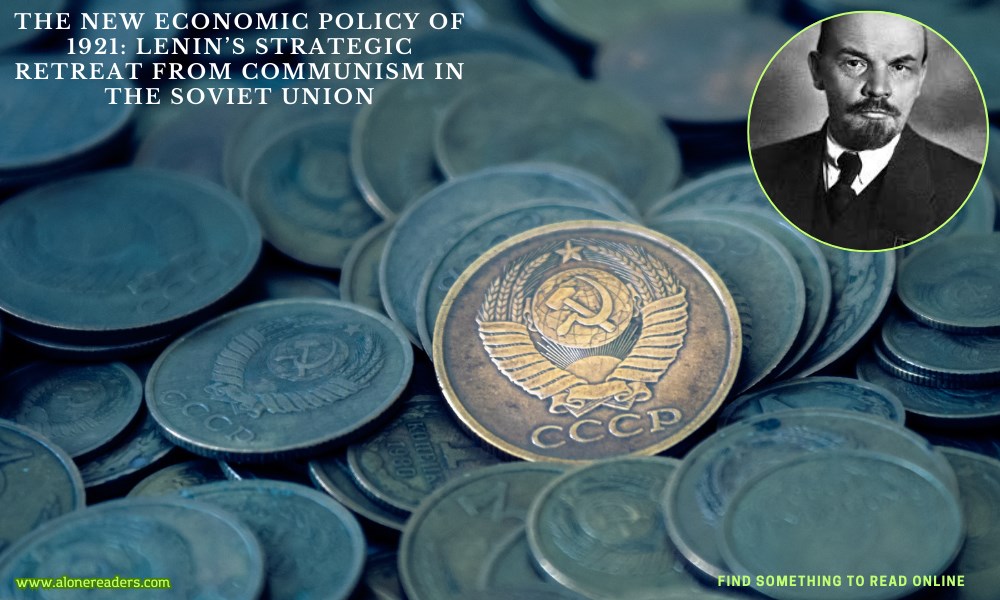
The New Economic Policy (NEP) was introduced by Vladimir Lenin in 1921 as a pragmatic response to the dire economic conditions faced by the Soviet Union after years of war and revolution. The policy marked a significant, albeit temporary, departure from the strict communist principles that had guided the Bolshevik regime since the October Revolution of 1917. Instead, the NEP allowed for a partial reintroduction of private enterprise and market mechanisms in an attempt to stabilize and rebuild the Soviet economy, which had been ravaged by civil war, foreign intervention, and internal strife.
By the time Lenin announced the NEP at the Tenth Congress of the Russian Communist Party in March 1921, the Soviet Union was on the brink of economic collapse. The war communism policies implemented during the civil war had left the country in ruins. Grain requisitioning, nationalization of industry, and the prohibition of private trade had led to widespread famine, peasant revolts, and a significant decline in industrial production. The economy was in shambles, with agricultural output at an all-time low and the urban working class facing severe shortages of food and basic necessities.
The New Economic Policy aimed to address these challenges by relaxing some of the harshest aspects of war communism. It allowed peasants to sell their surplus produce on the open market after paying a tax in kind to the state, which replaced the former practice of grain requisitioning. This change was intended to incentivize agricultural production and alleviate food shortages. Additionally, small-scale industries and private businesses were permitted to operate, and foreign investments were encouraged to bring in much-needed capital and expertise.
While the NEP retained state control over key industries, such as heavy industry, banking, and foreign trade, it effectively reintroduced a mixed economy. This shift was seen by many as a necessary compromise to prevent the collapse of the Soviet state. Lenin himself described the NEP as a strategic retreat, a temporary measure to gain time and build the foundations for a future socialist economy. He famously compared it to taking one step back in order to later take two steps forward.
The implementation of the NEP had immediate positive effects on the Soviet economy. Agricultural production began to recover as peasants were motivated to increase their output due to the possibility of selling their surplus. This, in turn, helped to alleviate the famine and improve the overall food supply. The reopening of markets and the resurgence of private trade also led to a gradual recovery in urban areas, where consumer goods became more available, and living conditions started to improve.
In the industrial sector, the NEP fostered the development of small businesses and light industries, which played a crucial role in revitalizing the economy. Although large-scale industry remained under state control, the influx of private investment and entrepreneurial activity helped to stimulate economic growth and innovation. The policy also led to a degree of cultural and intellectual revival, as the relative economic stability provided a more conducive environment for artistic and scientific pursuits.
However, the NEP was not without its critics and challenges. Some hardline communists viewed the policy as a betrayal of socialist principles and feared that it would lead to the resurgence of capitalist tendencies. The coexistence of state-controlled and private sectors created tensions and contradictions within the economy, and there were concerns about corruption and the emergence of a new class of wealthy entrepreneurs, known as "Nepmen," who profited from the market reforms.
Despite these criticisms, the NEP remained in place throughout the 1920s and played a crucial role in stabilizing the Soviet economy during a critical period. It provided the breathing room needed for the Bolshevik regime to consolidate its power and lay the groundwork for future economic policies. Lenin's pragmatic approach demonstrated his willingness to adapt Marxist principles to the realities of the time, highlighting the importance of flexibility and innovation in socialist governance.
The New Economic Policy came to an end with the rise of Joseph Stalin in the late 1920s. Stalin's push for rapid industrialization and collectivization marked a return to more orthodox communist policies and the abandonment of the market-oriented reforms of the NEP. The period of the NEP remains a unique and controversial chapter in Soviet history, reflecting the complexities and challenges of building a socialist economy in a largely agrarian society.
In conclusion, the New Economic Policy of 1921 was a bold and necessary response to the economic crises faced by the Soviet Union. Lenin's temporary retreat from communism underscored the need for pragmatic solutions in times of crisis and demonstrated the potential for a mixed economy to achieve stability and growth. While the NEP ultimately gave way to more rigid economic policies under Stalin, its legacy offers valuable lessons on the interplay between ideology and practical governance in the pursuit of economic development.